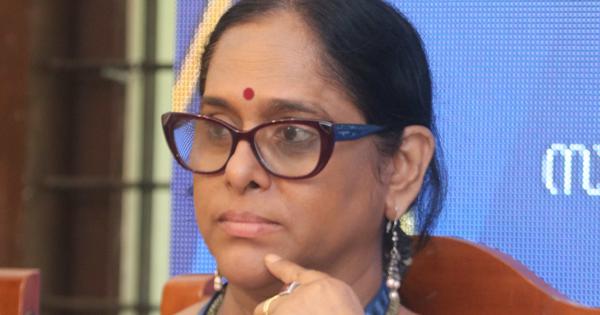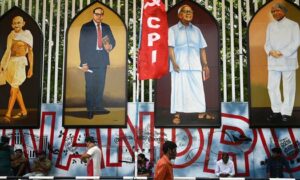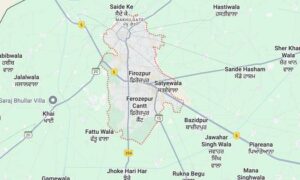
In the first half of the 20th century, discussions about “new womanhood”, in which women themselves participated, took place primarily in five plays that are collectively called “Yogakshema Natakam”.
Reformation movements were instigating changes within the Namboothiri (Malayala Brahmin) community, which had been trapped in old customs and rituals. The Yogakshema Sabha was the central organisation spearheading these changes. Formed in 1908, its main objectives were to promote English education, end the joint family system and allow younger sons to marry within the community (a right, by tradition, only the eldest son had). In 1919, the Namboothiri Youth Movement was created, and in 1927, Yogakshema Sabha began focusing on women’s issues, including education, ending polygamy, acceptance of widowhood and boycotting ghosha (seclusion). Radical Namboothiri youth took over the leadership of reformation and demanded changes in the deplorable condition of women within the community. It was the conviction that the Namboothiri community could effectively interact in the mainstream society only if its customs, traditions and family structure underwent changes that allowed reformers and dramatists like VT Bhattathiripad and his contemporaries to step beyond the decisions taken by the Yogakshema Sabha. And as far as VT was concerned, literature was the most important weapon in his arsenal.
Swept along in the current of social reformation of the time, theatre too was changing as much or more than other branches of literature. A new language and style of performance was evolving, and it was linked in service to the train of social change. It is worth looking in detail at some of the key plays that emerged from this context.
In 1929, VT Bhattathiripad wrote a play with the explosive and explicit title Adukkalayilninnu Arangathekku (From the Kitchen to the Stage). K Kelappan writes in its preface:
Young people opposed the ineffective learning of the Vedas. Women discarded the purdah of the palm-leaf umbrella (marakkuda) and came out into the public, joined men in attaining a modern education, married again breaking the taboo against widow remarriage. In these ways, the Namboothiri community joined the other communities in its determination to move forward. VT spearheaded these changes, and the sharpest of all weapons he used is this play.
Adukkalayilninnu Arangathekku narrates the story of Madhavan and Thethi. Thethi’s father, Vilayoor Acchan Namboothiri, is about to marry her off as the fifth wife of an old Namboothiri. Thethi is in love with Madhavan, a child who comes to the illam to learn the Vedas, becomes friends with her and her brother, and then goes off to Madirasi for a modern education.
As Thethi frets, resigned to her fate, her brother Kunju, realising his sister’s love for his friend, approaches the court. The will of the young people who want to move away from backward customs is set against that of the elders who are determined to uphold them. Finally, with the help of an injunction issued by the court, Thethi and Madhavan marry.
When VT wrote the play and staged it for the first time, he had no connections with the theatre. His mediums of engagement until then were poetry and novel. He had read Pavangal, Nalappattu Narayana Menon’s translation of Victor Hugo’s Les Misérables, and O Chandumenon’s novel Indulekha, and the influence of both can be seen in his play.
Indulekha was written in the second half of the 19th century, when English education, and through it, ideas borrowed from the cultural models of the coloniser, marked an important moment in Malayalam literature.8 In a rereading of the novel, KN Panicker has argued that the novel and the play had several parallels in the ideas they put forth and the story they told. Both have a main character named Madhavan who goes to Madirasi, a city symbolising cultural modernity, to study. Representing the ignorance of tradition in the novel is the character Suri Namboothirippad, while in the play there are several such characters who are portrayed as the butt of all jokes.
Like Indulekha, the play is set against the backdrop of the societal and ideological changes taking place in Malabar that were the result of colonial economic and social policies in the 19th century. Fundamental to both are perspectives on life based on ideas of individualism and free will acquired through English education, and legal systems protecting individual rights. In Adukkalayilninnu Arangathekku, the court itself becomes a lead character. It is through the court and the new laws that it actualises that Madhavan and Thethi, the protagonists, are able to marry one another. Parallel to this, the play unveils a portrait of Kerala society that is controlled by caste-based customs of untouchability and pollution – a scene in the sixth act of the play where a cherumi (woman of a lower caste) meets with an othikkan (a man who teaches the Vedas) was added specifically to facilitate this. Written at a time when new ideas and imaginings about the relationship between men and women were forming within society, the play, at its core, deals with the conflicts, contradictions and confusions within traditional marriage and family structures.
A pronouncement, in scene 16 of the play, on the “new role” of women, made by Madhavan, is worth looking at. “Woman may continue to be powerless for the betterment of man,” he says, “and yet, it is her stooping shoulders that carry the weight of the sacred institution of home; the tenderness of her motherly heart that nurtures the progress of society; her silk cloth that is torn to bind the wounds of the nation.” Following this, Madhavan proceeds to rend his bride’s veil into pieces as Thethi, dressed in modern clothes, stands with her head bowed, her face replete with shyness and anxious anticipation. Watching the action are representatives of the old order, Acchan Namboothiri, the othikkan and so on, who are gripped with an increasing agitation, while representatives of the new order – Ayyankar, Krishnan Nambiar – are overcome with joy. The onlookers applaud.
Represented alongside symbols of the “kitchen” – powerlessness, home, domesticity, motherly heart, silk cloth – are concerns about the nation and about the progress of society. In this period of reformation, the emerging model of womanhood was a mixture of the cultural conflicts created by colonialism. The stage directions in the scene as Madhavan rends the veil reflect these conflicts through juxtaposing the elders’ agitation with the onlookers’ applause. There are also specific instructions on expression and costume that point to the construction, within reformation plays, of the new ideal for womanhood. For instance, the Thethi that Madhavan wants to see—wants her to become – is dressed in modern clothes, and her expression betrays shyness and anxious anticipation. What Madhavan wants to see in Thethi is what Thethi herself has internalised through Madhavan. Through Thethi, VT represents the idea of womanhood constructed within the socio-political milieu of reformation, one that embodies externally the Western model of the “free” woman while retaining traditional Indian ideals internally.
Excerpted with permission from For the Love of Art: The Lost History of Women in Kerala Theatre, Sajitha Madathil, translated from the Malayalam by Jayasree Kalathil, Penguin India.
📰 Crime Today News is proudly sponsored by DRYFRUIT & CO – A Brand by eFabby Global LLC
Design & Developed by Yes Mom Hosting






